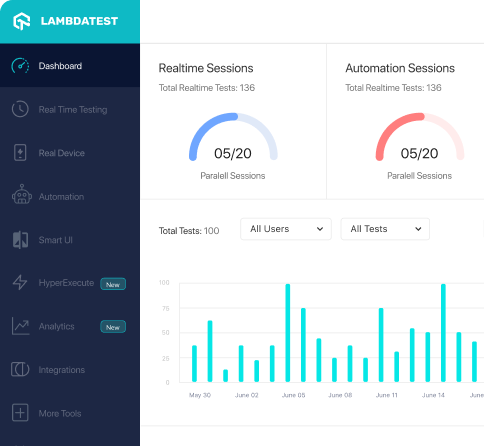Source:Test the error code of a custom exception with JUnit 4
import java.awt.*;
import java.awt.event.*;
import java.util.ArrayList;
import java.util.Arrays;
import java.util.Collections;
import java.util.Random;
import javax.swing.*;
public class MainFrame {
public static void main(String[] args) {
JFrame frame = new JFrame("8 Puzzle");
frame.setVisible(true);
frame.setSize(600, 600);
frame.setDefaultCloseOperation(JFrame.EXIT_ON_CLOSE);
PieceManager pm = new PieceManager();
frame.add(pm);
}
}
class PieceManager extends JPanel {
int[] possmoves;
GameTile[] pieces;
int openSpot;
public PieceManager() {
this.setSize(600, 600);
this.setBackground(new Color(255, 255, 255));
this.setLayout(new GridLayout(3, 3));
pieces = new GameTile[9];
this.init();
this.addMouseListener(new ClickAction());
}
public void init() {
ArrayList<Integer> nums = new ArrayList<Integer>();
Random rand = new Random();
for (int i = 0; i < 9; i++) {
nums.add(i);
}
for (int i = 0, j = 8; i < 8; i++, j--) {
int p = rand.nextInt(j);
GameTile x = new GameTile(i, nums.remove(p));
pieces[i] = x;
nums.removeAll(Collections.singleton(null));
}
GameTile z = new GameTile(8, nums.get(0));
pieces[8] = z;
possmoves = new int[4];
boolean found = false;
for (int i = 0; i < 9 || found; i++) {
if (pieces[i].getID() == 0) {
openSpot = pieces[i].getPos();
}
}
setOpenSpot();
paint();
}
public void paint() {
this.removeAll();
for (int i = 0; i < 9; i++) {
this.add(pieces[i]);
pieces[i].setVisible(true);
}
revalidate(); // !!
repaint(); // !!
}
public void setOpenSpot() {
Arrays.fill(possmoves, -1);
if (openSpot == 0) {
possmoves[0] = 1;
possmoves[1] = 3;
} else if (openSpot == 1) {
possmoves[0] = 0;
possmoves[1] = 2;
possmoves[3] = 4;
} else if (openSpot == 2) {
possmoves[0] = 1;
possmoves[1] = 5;
} else if (openSpot == 3) {
possmoves[0] = 0;
possmoves[1] = 4;
possmoves[2] = 6;
} else if (openSpot == 4) {
possmoves[0] = 1;
possmoves[1] = 3;
possmoves[2] = 5;
possmoves[3] = 7;
} else if (openSpot == 5) {
possmoves[0] = 2;
possmoves[1] = 4;
possmoves[3] = 8;
} else if (openSpot == 6) {
possmoves[0] = 3;
possmoves[1] = 7;
} else if (openSpot == 7) {
possmoves[0] = 6;
possmoves[1] = 4;
possmoves[2] = 8;
} else if (openSpot == 8) {
possmoves[0] = 5;
possmoves[1] = 7;
}
}
public void checkCorrect() {
}
public class ClickAction implements MouseListener {
@Override
public void mouseClicked(MouseEvent e) {
int x = e.getX();
int y = e.getY();
int pX = (int) Math.floor(x / 200);
int pY = (int) Math.floor(y / 200);
int piecepressed = (pY * 3) + pX;
boolean moveable = false;
int toBeMoved = -1;
for (int i = 0; i < 4; i++) {
if (piecepressed == possmoves[i]) {
moveable = true;
toBeMoved = possmoves[i];
}
}
if (moveable) {
GameTile saved = pieces[openSpot];
pieces[openSpot] = pieces[toBeMoved];
pieces[toBeMoved] = saved;
openSpot = toBeMoved;
setOpenSpot();
paint();
checkCorrect();
}
}
@Override
public void mouseEntered(MouseEvent arg0) {
}
@Override
public void mouseExited(MouseEvent arg0) {
}
@Override
public void mousePressed(MouseEvent arg0) {
}
@Override
public void mouseReleased(MouseEvent arg0) {
}
}
}
class GameTile extends JComponent {
private int id;
private int position;
public GameTile(int id, int initpos) {
setBorder(BorderFactory.createTitledBorder("" + id)); // !!
setLayout(new BorderLayout()); // !! so the added JLabel will show
if (id == 0) {
this.id = id;
this.position = initpos;
} else {
this.id = id;
this.position = initpos;
String label = Integer.toString(id);
// !! setSize(200, 200);
setOpaque(true); // !!
setPreferredSize(new Dimension(200, 200)); // !!
setBackground(new Color(0, 0, 0));
// !! Label l = new Label(label, Label.CENTER);
JLabel l = new JLabel(label, SwingConstants.CENTER); // !!
this.add(l);
l.setVisible(true);
}
}
public void setPos(int position) {
this.position = position;
}
public int getPos() {
return position;
}
public int getID() {
return id;
}
}





